Debt Market Insights | Q4 2023
by Michael Schroeder
While the topic of heightened interest rates isn’t new over the past year, the impacts and dynamics of the current rate and banking environment are worth discussing. After an approximate 14-year run of low interest rates, the current environment is quite different and has put pressure on existing borrowers and those looking to secure new financing to support growth and M&A initiatives. In efforts to tame inflation, since 2021 the Fed has raised its benchmark short-term rate 11 times from nearly zero to over 5.0%, as shown in the chart below. Over the next year, it is expected that rates will remain elevated around the current levels. Beyond higher rates putting pressure on existing and prospective borrowers, it has fueled the growth of non-traditional bank lenders in the market (i.e., private debt or private credit and direct lenders).
Interest Rates on M&A Deals

Following a number of sizable bank failures in early 2023 (e.g., Silicon Valley Bank and Signature Bank), largely caused by the rapid rise in rates that put pressure on bank liquidity and the continuation of general economic uncertainties, much of the traditional banking industry has reduced their risk appetite for lending at this time, especially on M&A deals or those with a higher risk profile. The impact of such has led borrowers to cast a much wider net to find interested lending partners with reasonable terms, and has resulted in non-traditional banks stepping in to fill the void and increase market share. The following two charts evidence these dynamics:
Net Percentage of Domestic Banks Tightening Standards for C&I Loans

Estimated Direct Lending Market Share, Sponsor M&A Financing

It is expected that non-traditional banks will continue to increase their market share in the near-term as it seems traditional banks remain in a “risk-off” state, especially with continued global and economic uncertainties along with bank regulators and management focused on liquidity. Non-traditional bank lenders, which typically raise funds from institutional investors and high net worth individuals like its counterparts in private equity, generally have a greater risk appetite, can offer greater flexibility and close loans quicker. All that being said, there are heightened costs (both rates and fees) to using non-traditional bank lenders although that spread has tightened over the past 12 months. Interest rate spreads on non-traditional bank senior lenders are generally in the ballpark of 2.00-4.00% higher than traditional bank lenders.
With a growing market demand and investors increasingly attracted to alternative investments (supporting the availability of non-traditional lending), the private debt market is expected to exceed $2.0 trillion in the coming years, covering a wide variety of lending options and structures. The spectrum of debt types can range from senior-secured and asset-based lending (ABL), mezzanine and subordinated, unitranche, bridge loans, distressed and real estate, among others. Depending on the debt type and structure, direct lenders may seek to participate in the equity upside as well (e.g., equity participation, equity warrants, or conversion rights). This wider range of products from non-traditional lenders along with greater flexibility could allow borrowers to find solutions that best fit their individualized needs.
Whether you’re exploring an upcoming refinancing or require debt to support growth or acquisitions, work with Taureau Group to assist in exploring the broad range of capital options to source the solution that best meets your objectives, especially in the current environment.
For more information or to better understand your options related to capital needs or transitioning your business, please contact Michael Schroeder, Director, at ms@taureaugroup.com or any member of the Taureau Group team here.
